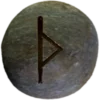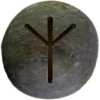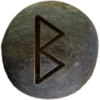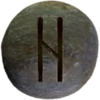Last Updated on April 20, 2025
Table of Contents


Iceland’s Midwinter Feast
Thorrablót (pronounced, “THOR-ra-blowt”) is a traditional Icelandic feast. It happens during the coldest part of winter, usually in late January or early February. The event celebrates the old Norse month of Þorri (pronounced THOR-rih). It marks survival and unity during dark, cold months. Alternative, it is spelled, Þorrablót.
People in Iceland gather for Thorrablót with food, drink, and storytelling. The event often includes speeches and songs, many humorous or satirical. Attendees wear old-fashioned clothes or Viking-inspired outfits to create a festive mood.
Thorrablót began as a rural tradition. Now, it is celebrated across Iceland. Communities, schools, companies, and families host their own events. Icelanders abroad also observe it, especially in Canada and the United States. Despite its ancient name, Thorrablót’s modern form started in the 19th century. National pride and interest in heritage drove its revival. The feast helped Icelanders connect with their past while forming a modern identity.
Old Norse Roots and Cultural Pride
The word “blót” means sacrifice or feast. In earlier times, people used it to honor gods, spirits, or ancestors. The name Þorri appears in the Hversu Noregr byggðist (How Norway Was Settled), part of the Flateyjarbók manuscript. This saga describes Þorri as a legendary king of Finland and Kvenland. ![]()
In the story, Þorri offers midwinter sacrifices. His name becomes linked to the month and the seasonal celebration. The modern Thorrablót echoes this old tale, though no sacrifices happen now. The focus has shifted to food, friendship, and tradition.
During the 1800s, Iceland faced Danish rule. Thorrablót became a symbol of national culture. Celebrating it reinforced the Icelandic language and identity. Students and poets helped shape the modern version, mixing old themes with contemporary spirit.
The Food: Fermented and Fearless
Thorrablót menus include strong, preserved foods. These come from old preservation methods. In winter, Icelanders had to store food without refrigeration. Fermenting, curing, and smoking were vital.
Here are some examples of traditional dishes:
Hákarl (HAU-kartl): Fermented shark meat. It has a strong smell and ammonia-like taste.
Súrsaðir hrútspungar (SOOR-sathir HROOTS-poong-ar): Pickled ram’s testicles.
Svið (SVITH): Boiled sheep’s head, usually halved.
Lundabaggi (LOON-da-bahg-gi): Rolled sheep fat.
Lifrarpylsa (LIV-rar-pill-sa): Liver sausage, like haggis.
Blóðmör (BLOATH-mur): Blood pudding.
These foods come with rúgbrauð (ROOG-broyth), a dense rye bread, and brennivín (BREN-ni-veen), a local spirit called “Black Death.” The strong alcohol helps cut through the sharp flavors.
The taste can surprise newcomers, but many Icelanders eat these foods with pride. Thorrablót celebrates not only the food but the strength of those who ate it to survive.
Rituals, Humor, and Togetherness
Thorrablót events start with a welcome speech. An elected “toastmaster” leads the evening. They keep things moving with jokes and commentary. Traditional poems and songs follow. Some are romantic, some funny, and others heroic. A satirical play or skit often entertains the crowd. These sketches poke fun at politics or local news. Nothing is too serious at Thorrablót. Laughter and fun balance the harshness of the food.
After eating, dancing usually begins. Music ranges from folk to pop, depending on the crowd. The event may end late into the night.
While Thorrablót may sound extreme, it’s about joy and survival. It honors those who endured long winters and kept spirits high. It reminds people that culture comes from resilience and shared experience.
Revival and Relevance
Though ancient in inspiration, Thorrablót grows with modern Iceland. New generations embrace it with pride and curiosity. Chefs experiment with traditional ingredients. Musicians write new songs for the feast. Artists stage bold performances. Some Icelanders skip the stronger foods. Others blend old and new by adding fish soup or lamb stew. The core remains: community, memory, and joy in the middle of darkness.
Runes Associated with Thorrablót
Two Elder Futhark runes—Thurisaz (ᚦ) and Algiz (ᛉ)—carry strong ties to this festival. ![]()
Thurisaz (pronounced THOO-ree-saz) connects to giants and raw power. This rune symbolizes chaos, defense, and transformation. People invoke it during Thorrablót to confront challenges and clear spiritual paths. It also marks a turning point in the harsh season.
Algiz (pronounced AHL-geez) represents protection and sacred connection. It resembles an elk’s antlers reaching upward. During the festival, this rune acts as a spiritual shield. It invokes strength, guidance, and divine presence. Participants use it in rituals for blessings and safety.
Both runes balance primal force and sacred defense. They reflect the wild energy and solemn reverence found in Thorrablót. Their presence in carvings and ceremonies reminds people to honor nature, face hardship, and call on ancient strength during the dark heart of winter.
Its Importance in Asatru
Thorrablót is a midwinter feast that honors the Norse gods, ancestors, and the resilience of the people. Asatruar gather to celebrate strength, endurance, connection to old traditions, and share fermented foods. Rituals include toasts, songs, and storytelling. People raise horns to Thor, the god of thunder and protector of humanity.
This feast builds community and reinforces spiritual identity. It helps modern Asatruar stay connected to their roots. Each element, from food to firelight, speaks of survival. In honoring the past, they strengthen their present. Tradition lives in every shared story and bite of ancient fare.


